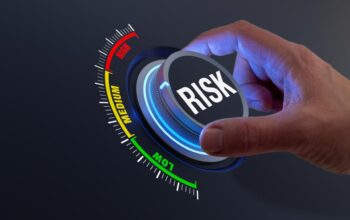In an increasingly complex and unpredictable world, the need for robust protection—both personal and financial—has never been more paramount. From navigating the inherent risks of daily life to safeguarding against unforeseen catastrophes, individuals and businesses alike seek comprehensive solutions that offer peace of mind. This pursuit has driven a significant evolution in the realm of insurance, moving beyond traditional reactive models to embrace proactive, intelligent, and personalized strategies. The era of “smart protection” is upon us, leveraging cutting-edge technology and data analytics to anticipate needs, mitigate risks, and offer truly tailored coverage for tomorrow’s challenges. This article delves deep into the transformative power of smart protection, exploring its core principles, the innovative technologies driving its evolution, its profound impact across various sectors, and the exciting future trends poised to redefine how we secure our lives and assets.
The Evolving Landscape of Risk
Historically, insurance operated on a broad stroke. Policies were often one-size-fits-all, based on actuarial tables derived from large population groups and past events. While effective to a degree, this approach often overlooked individual nuances, leading to generalized pricing and sometimes inadequate coverage.
However, the world has changed dramatically. We now face a new spectrum of risks, including:
A. Increased Data Vulnerability: The digital age has brought unprecedented threats from cyberattacks, data breaches, and identity theft. B. Climate Change Impacts: More frequent and severe weather events pose escalating property damage and business interruption risks. C. Rapid Technological Advancements: New technologies introduce new liabilities, from autonomous vehicles to drone operations. D. Personalized Lifestyles: Modern living is highly individualized, with diverse travel habits, gig economy work, and unique asset ownership, demanding more flexible protection. E. Economic Volatility: Global economic shifts can quickly impact financial stability and asset values.
These evolving threats necessitate a more dynamic and intelligent approach to protection. “Smart protection” rises to this challenge by integrating technology, data, and behavioral insights to offer more precise, effective, and ultimately, more valuable coverage.
Pillars of Smart Protection: Technology and Data
At its core, smart protection is powered by a fusion of advanced technologies and sophisticated data analytics. These elements enable a granular understanding of risk, moving from historical averages to real-time, individual-centric insights.
A. Big Data Analytics
The foundation of smart protection lies in the ability to collect, process, and analyze vast quantities of data from diverse sources. This “big data” allows insurers to:
- Identify Granular Risk Factors: Instead of relying solely on demographic data, big data can uncover subtle patterns related to individual behavior, environmental factors, and specific asset characteristics that influence risk.
- Predict Future Outcomes: Predictive modeling, powered by machine learning algorithms, can forecast the likelihood of claims, identify potential fraud, and even anticipate emerging risks with greater accuracy.
- Personalize Pricing: By understanding individual risk profiles, insurers can offer hyper-personalized premiums that fairly reflect the actual risk an individual or asset poses, rewarding safer behavior.
- Optimize Operations: Data analytics streamline claims processing, fraud detection, and customer service, leading to more efficient and responsive operations.
- Develop New Products: Insights from data can reveal unmet needs or emerging risk areas, prompting the creation of innovative insurance products.
B. Artificial Intelligence (AI) and Machine Learning (ML)
AI and ML algorithms are the engines that make sense of big data, enabling intelligent decision-making and automation.
- Risk Assessment: ML models can analyze complex datasets (e.g., telematics data, health records, smart home sensor data) to generate highly accurate risk scores for individuals or properties.
- Fraud Detection: AI can identify anomalies and suspicious patterns in claims data that might indicate fraudulent activity, flagging them for human review.
- Automated Claims Processing: For simple, low-value claims, AI-powered systems can review documentation, verify facts, and even disburse payments automatically, significantly speeding up the claims process.
- Personalized Customer Experience: AI-driven chatbots and virtual assistants can provide instant support, answer policy questions, and guide customers through complex processes, improving satisfaction.
- Underwriting Automation: AI can automate large parts of the underwriting process, assessing risks and generating quotes in real-time, making insurance more accessible and faster to acquire.
C. Internet of Things (IoT) Devices
IoT devices, embedded with sensors and connectivity, provide real-time data about assets, behavior, and environmental conditions, transforming protection from reactive to proactive.
- Telematics in Auto Insurance: Devices installed in vehicles (or smartphone apps) collect data on driving behavior (speed, braking, acceleration, mileage). This allows for usage-based insurance (UBI), where premiums reflect actual driving habits, rewarding safe drivers. It also enables crash detection and emergency assistance.
- Smart Home Sensors: Devices like smart smoke detectors, water leak sensors, security cameras, and smart locks provide real-time alerts and data on property conditions. Insurers can offer discounts for homes equipped with these devices, and some policies may even include proactive monitoring or assistance in preventing damage.
- Wearable Technology in Health Insurance: Fitness trackers and smartwatches can monitor activity levels, heart rate, and sleep patterns. In health insurance, this data can be used in wellness programs to encourage healthy lifestyles, potentially leading to lower premiums or rewards for meeting health goals.
- Industrial IoT (IIoT): In commercial insurance, sensors on machinery and equipment can monitor performance, predict maintenance needs, and alert to potential breakdowns, reducing operational risks and preventing costly interruptions.
D. Blockchain Technology
Blockchain’s decentralized, immutable ledger system offers significant potential for enhancing trust, transparency, and efficiency in the protection industry.
- Smart Contracts: Automated, self-executing contracts that can trigger payouts automatically once predefined conditions are met (e.g., flight delay insurance, crop insurance based on weather data), eliminating human intervention and speeding up claims.
- Fraud Prevention: The immutable nature of blockchain makes it incredibly difficult to tamper with claims data or policy records, significantly reducing fraud.
- Data Security and Privacy: Encrypted data on a blockchain can offer enhanced security and give individuals more control over who accesses their personal information.
- Supply Chain Insurance: Tracking goods on a blockchain can provide granular data for supply chain insurance, offering greater transparency and accountability.
Smart Protection Across Key Sectors
The impact of smart protection is reverberating across various insurance sectors, fundamentally changing how coverage is offered, priced, and experienced.
A. Auto Insurance: The Telematics Revolution
Auto insurance is perhaps the most visible example of smart protection in action.
- Usage-Based Insurance (UBI): Drivers install a small device (or use a smartphone app) that tracks their driving behavior. Factors like mileage, speed, hard braking, rapid acceleration, and time of day driving are assessed. Safer drivers receive discounts, sometimes up to 30% or more. This incentivizes responsible driving and makes premiums more equitable.
- Pay-As-You-Drive (PAYD): A subset of UBI, where premiums are primarily based on the distance driven. Ideal for low-mileage drivers.
- Crash Detection and Emergency Services: Many telematics devices can detect a severe collision and automatically alert emergency services, sending the vehicle’s location, potentially saving lives.
- Theft Recovery: Integrated GPS tracking within telematics systems aids in the recovery of stolen vehicles.
This personalization transforms auto insurance from a generic annual expense into an active partnership that rewards safe behavior.
B. Home and Property Insurance: Proactive Risk Mitigation
Smart home technology is enabling a shift from reacting to property damage to actively preventing it.
- Smart Sensors for Prevention:
- Water Leak Detectors: Alert homeowners and sometimes insurers to leaks before they cause extensive damage, preventing costly water damage claims.
- Smart Smoke/CO Detectors: Provide earlier warnings and can even pinpoint the location of a fire.
- Security Systems (Cameras, Alarms, Smart Locks): Deter theft and provide evidence if a break-in occurs. Insurers often offer significant discounts for homes with these systems.
- Temperature Sensors: Prevent burst pipes in freezing conditions.
- Remote Monitoring and Alerts: Homeowners can receive real-time alerts on their phones, allowing them to take immediate action or notify responders. Some insurers may even offer proactive monitoring services.
- Personalized Premiums: Discounts for installing specific smart home devices or maintaining a low-risk profile based on sensor data.
- Streamlined Claims: In some cases, sensor data can corroborate claims, speeding up the assessment and payout process.
C. Health and Life Insurance: Wellness and Prevention
Smart protection in health and life insurance is moving towards promoting healthier lifestyles and proactive wellness.
- Wearable Tech Integration: Policyholders can share data from fitness trackers (steps, heart rate, sleep) with their insurers. In return, they might receive:
- Premium Discounts: For meeting specific activity goals.
- Rewards Programs: Vouchers, gift cards, or other incentives for healthy behaviors.
- Personalized Health Coaching: AI-driven insights and coaching based on activity data.
- Personalized Wellness Programs: Insurers can design tailor-made wellness programs based on an individual’s health data and risk profile, aiming to prevent chronic diseases.
- Early Intervention: Wearable tech can sometimes detect anomalies in health metrics, prompting individuals to seek medical attention earlier, potentially preventing more serious conditions.
- Simplified Underwriting: For some life insurance policies, wearable data can simplify or even automate parts of the underwriting process, reducing the need for extensive medical exams for healthier individuals.
D. Commercial and Specialty Insurance: Enhanced Risk Management
Businesses are leveraging smart protection to manage complex operational risks more effectively.
- Industrial IoT (IIoT) for Equipment Breakdown: Sensors on machinery monitor vibration, temperature, and performance metrics, allowing insurers to offer predictive maintenance programs. This reduces the likelihood of costly equipment breakdowns and associated business interruptions.
- Cyber Insurance: Advanced AI-driven threat intelligence and behavioral analytics are used to assess an organization’s cyber risk profile, leading to more accurate pricing and tailored coverage against data breaches and ransomware attacks. Some policies even include proactive cyber security services.
- Fleet Management: Telematics for commercial fleets improves safety, optimizes routes, reduces fuel consumption, and allows for usage-based premiums, benefiting logistics and transportation companies.
- Supply Chain Risk Management: Using blockchain and IoT to track goods and monitor conditions throughout the supply chain, allowing for more precise insurance against loss, damage, or delays.
- Parametric Insurance: Leveraging smart contracts and external data (e.g., weather data for agriculture, seismic data for earthquake insurance) to trigger automatic payouts when a specific event occurs, regardless of actual loss, streamlining claims for businesses affected by natural disasters.
The Benefits of Smart Protection
Beyond simply changing how insurance works, smart protection delivers tangible benefits to consumers, businesses, and insurers alike.
A. For Consumers
- Personalized and Fairer Pricing: Premiums more accurately reflect individual risk, rewarding safer behaviors and potentially leading to significant savings.
- Proactive Risk Mitigation: Instead of just paying out after a loss, smart protection helps prevent losses from occurring in the first place (e.g., water leak alerts, crash detection).
- Enhanced Convenience: Faster claims processing, easier policy management via apps, and instant access to support.
- Greater Transparency: Understanding how premiums are calculated and what data is used can build trust.
- Incentives for Healthy/Safe Behavior: Wellness programs and UBI encourage positive lifestyle changes.
B. For Businesses (Commercial Clients)
- Reduced Operational Risk: Predictive maintenance and real-time monitoring minimize costly equipment breakdowns and business interruptions.
- Lower Premiums: Discounts for implementing risk-reducing technologies and practices.
- Improved Safety Records: Enhances reputation and can lead to a safer working environment for employees.
- Streamlined Claims: Faster resolution of commercial claims, minimizing downtime.
- Better Business Continuity: Proactive risk management helps businesses recover faster from unforeseen events.
C. For Insurers
- More Accurate Underwriting: Better risk assessment leads to more precise pricing and reduced losses from mispriced policies.
- Reduced Fraud: AI and blockchain significantly enhance fraud detection capabilities.
- Improved Customer Loyalty: Personalized experiences, proactive services, and fairer pricing lead to higher customer satisfaction and retention.
- Operational Efficiency: Automation of claims, underwriting, and customer service reduces administrative costs.
- Competitive Advantage: Offering innovative, tech-driven products attracts new customers and differentiates the insurer in the market.
- New Revenue Streams: Opportunities to offer value-added services beyond traditional insurance (e.g., smart home monitoring, wellness coaching).
Challenges and Considerations
While the promise of smart protection is immense, its implementation comes with significant challenges that need careful navigation.
A. Data Privacy and Security
The collection of vast amounts of personal data (driving habits, health metrics, home activities) raises critical concerns about:
- Data Security: Protecting sensitive customer data from cyberattacks and breaches.
- Consent and Transparency: Ensuring customers fully understand what data is being collected, how it’s used, and providing clear consent mechanisms.
- Misuse of Data: Preventing data from being used for discriminatory purposes or sold to third parties without explicit permission. Rigorous regulatory frameworks and strong ethical guidelines are essential here.
B. Algorithmic Bias
AI and ML algorithms are only as unbiased as the data they are trained on. If historical data contains inherent biases (e.g., related to socioeconomic status, race, or gender), the algorithms could perpetuate or even amplify these biases, leading to discriminatory pricing or unequal access to coverage. Continuous auditing, diverse data sets, and ethical AI development are crucial to mitigate this risk.
C. Regulatory and Legal Frameworks
Existing insurance regulations were designed for a different era. The rapid evolution of smart protection demands:
- Adaptation of Laws: Regulators need to adapt laws to address data privacy, usage-based pricing, and the legal implications of smart contracts.
- Standardization: Developing industry standards for data collection, sharing, and security.
- Consumer Protection: Ensuring that new pricing models are fair, transparent, and don’t unfairly penalize certain groups.
D. Consumer Trust and Adoption
Despite the benefits, some consumers may be hesitant to embrace smart protection due to concerns about privacy, surveillance, or simply a lack of understanding. Building trust through clear communication, demonstrating tangible benefits, and ensuring data security is paramount for widespread adoption.
E. Technology Integration and Cost
Implementing smart protection requires significant investment in technology infrastructure, data scientists, AI specialists, and IoT device integration. Insurers need to manage these costs effectively and ensure seamless integration with legacy systems.
The Future of Smart Protection
The journey of smart protection is just beginning. Several exciting trends are poised to further revolutionize the industry.
A. Hyper-Personalization Beyond Pricing
The future will see protection plans tailored not just to individual risk, but to specific life events, behaviors, and even real-time needs. Imagine:
- Dynamic Coverage: Insurance that automatically adjusts based on your location (e.g., higher coverage when driving in a high-risk area), activity (e.g., temporary coverage for a specific sporting event), or assets (e.g., a smart home policy that adapts as you add new IoT devices).
- Behavioral Economics Integration: Gamification and more sophisticated incentives to encourage positive risk-reducing behaviors.
- Preventative Services Ecosystems: Insurers becoming partners in prevention, offering a wider range of value-added services like cybersecurity consultations, health coaching, or smart home installation services, moving beyond just payouts.
B. Embedded Insurance
Insurance becoming seamlessly integrated into the purchase of products or services. For example, when you buy a new smart appliance, an embedded micro-insurance policy might automatically activate to cover potential malfunctions or water leaks. This makes protection effortless and ubiquitous.
C. Parametric Insurance Expansion
Leveraging blockchain and real-time data, parametric insurance will become more widespread, especially for risks difficult to traditionally assess like natural disasters or cyberattacks. Payouts will be triggered automatically when pre-defined parameters are met, eliminating lengthy claims processes.
D. AI-Powered Advisory and Risk Coaching
AI will not only assess risk but also act as a personal risk advisor, helping individuals and businesses understand their vulnerabilities and suggesting proactive steps to mitigate them. This moves protection from a transactional product to a continuous service.
E. Quantum Computing and Advanced Data Science
The advent of quantum computing could unlock unprecedented capabilities in processing vast datasets and running complex simulations, leading to even more sophisticated risk modeling, fraud detection, and personalized product development.
Conclusion
The concept of “Smart Protection for Tomorrow” represents a fundamental shift in how we approach security and risk management. By harnessing the power of big data, artificial intelligence, and the Internet of Things, the insurance industry is transforming itself from a reactive financial safeguard into a proactive, intelligent partner in risk prevention and mitigation. This evolution delivers unparalleled benefits: fairer pricing, personalized coverage, enhanced safety, and greater peace of mind for individuals, families, and businesses.
While challenges related to data privacy, algorithmic bias, and regulatory adaptation remain, the trajectory towards smarter, more integrated protection is clear. As technology continues to advance, we can anticipate an even more dynamic and responsive future, where our ability to anticipate, manage, and mitigate risk is seamlessly woven into the fabric of our daily lives. Embracing smart protection isn’t just about adapting to change; it’s about actively shaping a more secure, resilient, and intelligently protected future for everyone.










